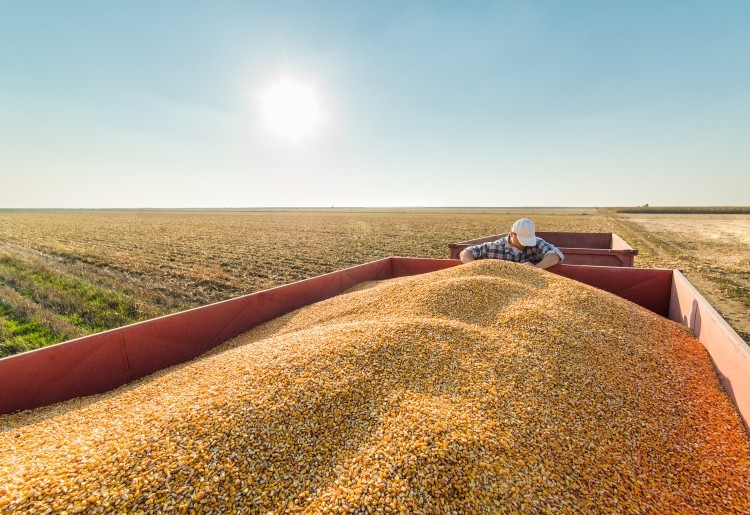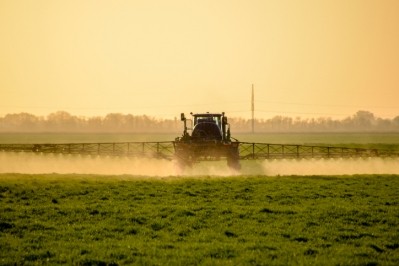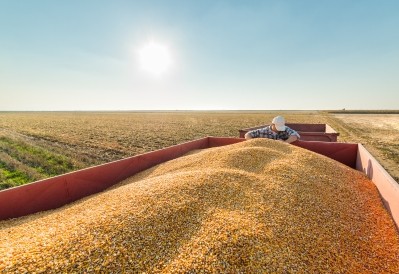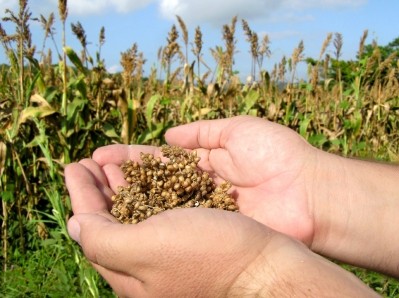USDA: Corn production lags even in warm weather, soybeans keep pace

The US Department of Agriculture (USDA) released details of feed crop production and harvest on Monday.
The warmer temperatures brought a change for the feed crops as August and the first part of the month were several degrees below normal temperatures, said Jim Angel, state climatologist for Illinois. “We had cooler air coming out of Canada,” he added.
“The way the circulation pattern was set up, the high pressure to the north of us was pumping the cooler weather to us – we were 5-10 degrees below normal,” he told FeedNavigator. “[There was] not much precipitation because that Canadian air was dry.”
The change has alleviated initial concerns of an early frost generated by the cooler temperatures, he said. The average for feed crop producers in the northern part of the Illinois region is to expect frost starting in the first or second week of October.
“We’re pretty safe from an early frost,” he said. “We’ll be passed the average [frost point], if we ever cool off.”
Instead, the forecast through at least the next two weeks calls for a continuation of above average temperatures and dry weather, said Angel. “The hurricanes always seem to throw things off a little bit – they pass over other parts of the US and disrupt us – that is part of it is going on,” he added.
“The short and long term forecasts show us being dry and warm,” he said. “It’s more unusual in the northern part than the southern part of the state – but it’s pretty warm.”
Although shorter days may mean temperatures are less likely to continue reaching, or surpassing, 90 degrees (32.2 C), he added.
Corn and soy pacing
About 93% of the corn crop has reached the corn dent state with about 51% hitting maturity, said the USDA. Last year about 70% of the crop was mature at this point and on average about 64% is.
The corn harvest has started for the majority of states, the department said. Only Wisconsin has not seen the start of harvesting.
Last year about 14% was collected by this point in the season and on average about 17% has been harvested, the department said. About 11% has been completed at this point this year.
Corn quality stayed consistent with previous weeks with about 61% of the crop being rated as “good” or “excellent,” the department said. However, the grade is a drop from last year, when about 74% of the crop earned that combined rating.
Soybean production, however, is keeping pace with average production, said the USDA. About 63% of the crop has reached the stage of dropping leaves, which is average for the crop, if down slightly from last year.
Harvest of the feed crop also has started in all of the 18 states responsible for the majority of production, the department said. Last year about 9% of the crop had been collected by this point, on average 12% has been and this year about 10% of the crop is out of the field.
Crop condition improved slightly from last week, said the department. However, the amount of the crop that earned a combined good or excellent rating remains behind last year’s score at this time.
Wheat progress
The planting of the winter wheat crop has started, said the USDA. But the pace remains behind previous years.
Both last year, and on average, about 28% of the crop had been planted by this point, the department said. This year, about 24% of the crop has been planted.
Even with the ongoing dry weather, there is an expectation that soil moisture will be restored when major feed crops like corn and soy are planted in the spring, said Angel. However, there may be some concerns for those with autumn planting.
“Fall cover crops or winter wheat could be hard to get those established because there isn’t enough soil moisture,” he said.
Weather pattern watch
There has been an ongoing watch for the development of a La Nina weather pattern during the summer, said Angel. The pattern is much more difficult to identify than the start of an El Nino cycle.
“Now they’re starting to talk about increased chance for La Nina in fall and winter,” he said. “There is a 55 to 60% chance that it will occur.”
The pattern may bring additional moisture during winter months, he said. “Sometimes when a La Nina is going on we can have trouble with drought, and that is only if it sticks around,” he added.















